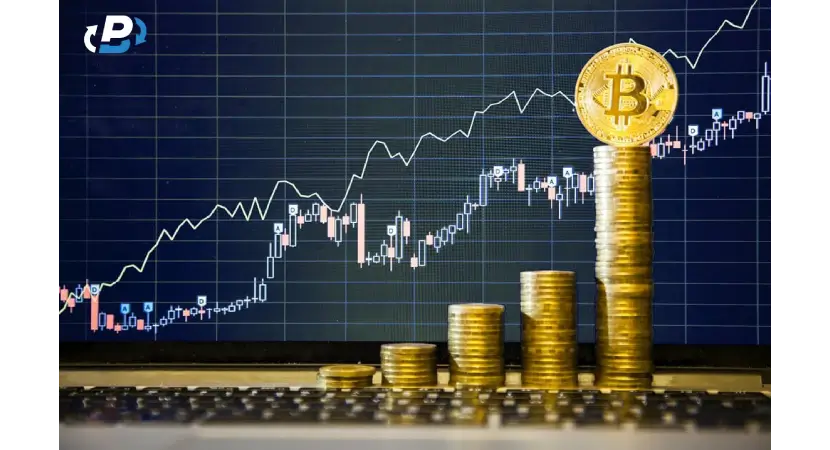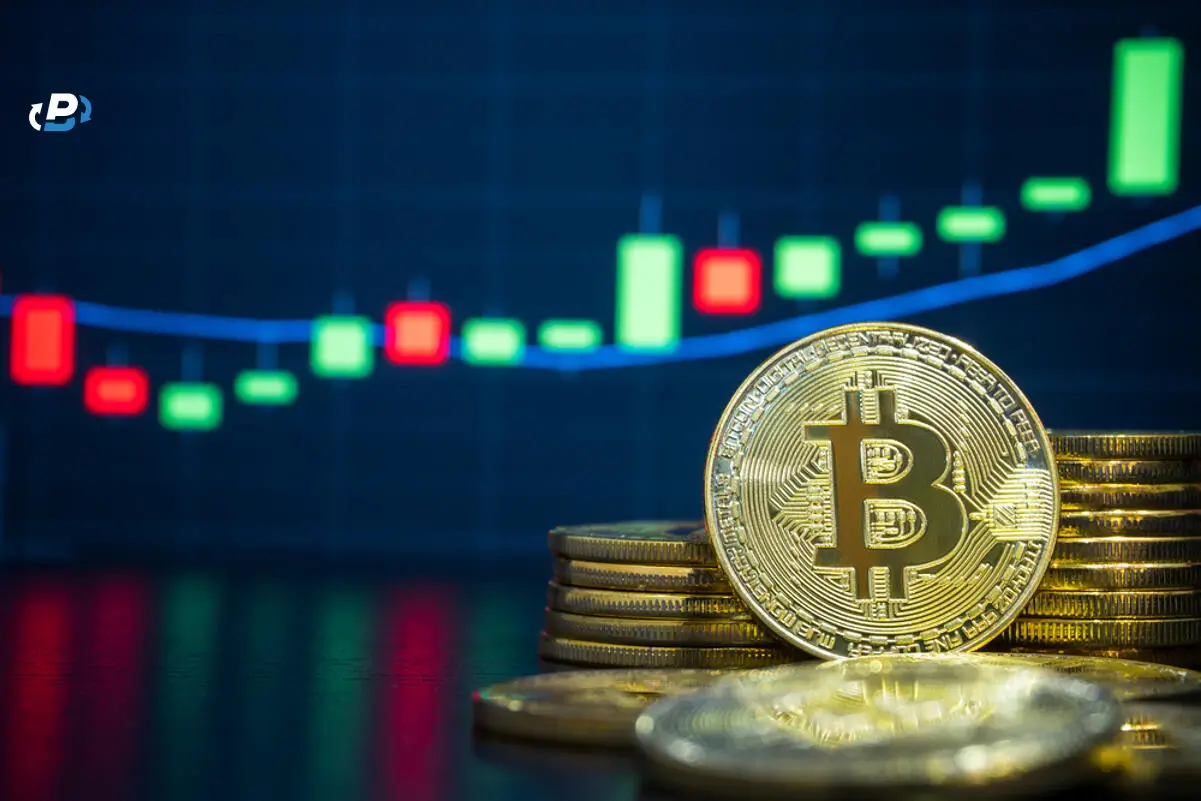Cryptocurrency trading is a highly profitable venture. However, knowing when to take profits in crypto trading is crucial and a proven method of maximizing profits is to close half of the trade after reaching 10% profit and then move the stop order of the remaining half to the trade opening price, set the take profit on 20% profit, and leave half of the trade still open. Then you either profit another 20% on the remaining half or break even, but in any case, you already hold on to the profit on the first half. This is to ensure gains are maximized while losses are minimized.
Taking steps like these will reduce the probability of losing money. As we all know, traditional financial institutions have a working-hour frame. In contrast, the crypto market operates on a 24-hour scale. This factor makes decision-making difficult since it continues nonstop. Such decisions include the right time to exit a trade. We will discuss working strategies to help you determine the best time to take profits while trading crypto.
Why You Should Have Good Exiting Strategies
The cryptocurrency market is highly volatile and unpredictable. To have a successful trading journey, it is essential to possess a solid exiting strategy. Knowing when to exit a trade can make a significant difference between earning huge profits and recording losses. Also, storing your profits on PlasBit will guarantee the safety of your funds pending when you want to trade again. In this section, we will talk about why good existing strategies should be handy. Furthermore, working strategies you can apply will be highlighted. What are the benefits of good exit strategies? Some of them include:
- Helps minimize losses: A good exiting strategy will help to reduce losses. You are bound to exit a trade when it is not going well. It helps in preventing emotional decisions and impulse trading. This is to avoid incurring larger losses.
- Helps in locking in profits: Exiting at the right time allows you to save profits before a market shift. You have to strike a balance between maximizing profits and avoiding greed. Having a good strategy will help you retain your gains.
- Helps reduce risks: How can you mitigate risks in a highly volatile crypto market? Having a good exiting strategy is the solution. You can set stop-loss orders and profit targets on your account. This will help manage risks and prevent catastrophic losses.
- Helps in fostering discipline: A good exiting strategy helps to boost discipline while trading. It enables you to think ahead and stick to an existing plan. This helps prevent impulsive decision-making based on emotions. It also guides you against trading based on short-term market fluctuations.
Recommended Exiting Strategies You Can Apply
Now, you have an idea of why exiting strategies are important. Let us discuss some recommended exiting strategies to apply while trading.
1. Make Use of Stop-Loss Orders
A stop-loss order is crucial when managing risk during trade. This is a predetermined price level where you set your exchange to sell at a specific amount. The purpose of this strategy is simple. It helps to limit potential losses by selling when the price is not favorable. Here is an example of what we meant. If you buy a crypto at $200, you can set a stop-loss order at $150. If a dip occurs and the price of the coin drops to $150, the trade will automatically close.
Through this, you can protect yourself from further losses. In erratic markets, stop-loss orders are relevant. Taking note of volatility, setting it too close to the current price could lead to premature selling. Also, setting it too far from the current price could expose you to bigger losses. When establishing stop-loss orders, take your risk tolerance and the coin's volatility into account.
2. Activate Trailing Stop-Loss
A trailing stop-loss order is a risk management strategy you can use when trading. What differentiates it from a stop-loss order is the trailing mechanism attached. Unlike a stop-loss order, this strategy adjusts automatically to the market shift when it is in a favorable direction. For instance, if you buy a cryptocurrency at $50 and set a trailing stop-loss of 10 cents, the stop loss will initially be set at $49.90. If the cryptocurrency price rises to $51, the stop loss will also rise to $50.90 (maintaining the 10-cent difference). However, if the price of the cryptocurrency falls to $50.80, the stop-loss order will remain at $50.90, locking in a profit of $0.90 per share.
Trailing stop-loss orders are extremely valuable in volatile markets. What sets them apart from others? They allow traders to protect their profits while developing the trade. However, it's important to note that trailing stop-loss orders do not guarantee absolute profits. This is because it can be triggered by short-term price fluctuations.
3. Set Profit Targets
Setting profit targets is another crucial strategy in trading. Doing this ensures you lock in profits and resist holding onto a winning trade for too long. The urge to hold for long is emotional and could lead to dire consequences. By establishing a profit target, you have set a specific price at which you will exit the trade. This is to enable you to protect your daily gains. In the case of a market decline, this strategy assists in effectively managing risk.
You can also avoid potential losses when put into place. Technical analysis is usually applied to determine profit targets. You have to take the market patterns and volatility into account. Your trading approach and level of risk tolerance may also have an impact on it. It's critical to establish reasonable profit targets that are within your reach. Having a specific one in mind can also assist you in preventing emotional decisions that could be harmful to your trading performance.
4. Track Moving Averages
Moving averages are essential when it comes to maximizing profits. They help to understand market trends and identify potential market decline. They help to manage price fluctuations by calculating the average price of a coin over a period. This can also determine the right time for you to trade or avoid. For instance, when a price exceeds the MA, this is an uptrend sign. It means you can safely buy the coin.
On the other hand, when the price goes below the MA, sell what you have. Better still, you should avoid trading. Using moving averages effectively guides traders to exit trades at the proper time. This would help you avoid potential losses in a downtrend. It would also help you maximize profits in an uptrend. After making your profits, PlasBit is a safe platform where you can store them.
The Importance of Setting Stop Orders
Setting stop orders and trailing stop losses are crucial when it comes to risk management in trading. Basically, they help to minimize losses and tilt you to the right path. These strategies will help you survive the volatile world of crypto. Stop orders will set a buying or selling function when a coin price reaches a certain level. Doing these will help protect your investments either by limiting losses or retaining profits.
Trailing stop losses are dynamic stop orders that adjust automatically as the price of a coin increases. If the price moves up, the trailing stop loss moves up with it. This helps to lock in profits. However, if the price declines, the trailing stop loss stays at its current level. This further helps to limit your losses.
One key reason why you should set stop orders and trailing stop losses is to help eliminate emotional decisions. Emotions like fear tend to cloud judgment and might lead you to make a poor decision. If you set predetermined exit points, you can avoid holding onto a decline with the wrong hope that it will turn around. In another beneficial manner, you may not be able to cash out too early when a trade is in profit.
It will ensure you don’t lose part of what you could have gained. These tools can also assist you in timing your trade exits. This is to make sure you make profits before a trend declines. Whether you are a beginner or a pro, following those steps will guide you properly in your trading journey.

Different Indicators You Can Use to Identify Profitable Opportunities
Trading indicators are vital for traders in search of opportunities. Are you thinking of when to take profits in crypto trading? These indicators are built for that. You can’t be a trader and not make use of indicators. They can assist you in analyzing price fluctuations and trends. These are some that can be used to spot profitable opportunities:
- Moving Averages (MA): The moving averages indicator is an effective and popular indicator used across the world. It helps to determine trends in a simple manner. There are two main types of moving averages. These include the simple moving average (SMA) and the exponential moving average (EMA). The SMA minimizes price swings and highlights long-term patterns. It is achieved by calculating an asset's average price within a specific period. However, the EMA is more sensitive to recent price fluctuations. This is because it places greater weight on trending prices. You can find potential buy or sell signals through these indicators.
- Relative Strength Index (RSI): The RSI is a momentum oscillator that tends to price variations in the trading sphere. It basically measures the speed and change in price movements. It ranges from 0 to 100 and is typically used to identify extremely traded coins in the market. When you see a reading above 70, consider it as an overbought coin. However, if it indicates below 30, the coin should be considered less bought. You can search for divergence between the RSI and price movements to anticipate trend reversals.
- Moving Average Convergence Divergence (MACD): The MACD is an indicator that shows the relationship between two moving averages. It consists of the MACD line and the signal line for tracking. These features help to identify price trends and measure the market momentum. They also aid in the identification of market entry points before you can buy or sell. As a trader, you have to keenly track the MACD line and the signal line. This will help you identify changes in trend direction. You have the green light to buy a coin when the MACD line goes above the signal line. On the other hand, you are permitted to sell when the MACD line crosses below the signal line.
- Bollinger Bands: A middle band (SMA) and two outer bands make up a Bollinger band. These bands expand and contract in response to changes in the market. Bollinger bands are useful for determining the relative high and low points of a price. Both upper and lower bands are utilized in pairs, along with a moving average. Moreover, the two bands are not meant to be used alone. You have to use the pair of Bollinger band signals to crosscheck other indicators.
- Market Sentiment: Market sentiment refers to the general perspective that traders have on a certain asset. It can indicate potential turning points and is essential in identifying market trends. As a trader, you can look up to market sentiment analysis for insights. This can aid in better decision-making. What are the ways you can use to gain these insights? Sentiment analysis algorithms, social media tracking, and surveys will guide you to the right path.
- News Events: Financial markets are subject to significant price movements due to news events. To profit from these swings, traders usually use news-based trading strategies. You can predict market changes and make well-informed judgments by keeping up with the latest news. Using this method entails evaluating news events, determining how they affect market sentiment, and placing trades in response. Accurate news interpretation and rapid execution are necessary for the successful application of these methods.
Why Risk Management is Important While Day-Trading
Risk management is a vital thing to consider while day trading. It is common among traders to trade financial assets within a day so as to profit from short-term fluctuations. Even though it can be quite profitable, there are a lot of risks involved. We have highlighted key reasons why you should prioritize risk management while day trading.
- Preservation of Capital: The main objective while day trading is to safeguard your trading capital. As a trader, you can prevent missing out on future trading chances by retaining your funds. You can also avoid incurring huge losses when you properly manage risks.
- Reduction in Emotional Decisions: Day trading could lead to emotional decision-making if things don’t go according to plan. By prioritizing risk management, you can activate effective risk management strategies. These would assist you in making logical decisions based on your trading plan.
- Firm Control on Leverage: Leveraging is a common tool used by day traders to maximize their earnings. However, it also raises the possibility of significant losses. Being in control of your leverage will help avoid disastrous losses. This means your risk-taking abilities will be managed, and your exposure to loss will be reduced.
- Adaptability: Market trends constantly change. This means there’s a variation in how things work within a period. Prioritizing risk management measures will allow you to adapt to the market conditions without risking your whole capital. What to do, what crypto exchange platform to use, and when to trade will be something easy for you.
The Need for Emotional Control and When to Take Profits in Crypto Trading
Emotional control is extremely important for succeeding in the crypto sphere. The volatile nature of the market is capable of leading you into emotional actions. Falling for such tends to cloud judgments and lead to impulsive decisions. To effectively survive this, you need to build your discipline level. This can help you manage your emotions and know when to take profits in crypto trading. One of the frequent issues in crypto trading is letting emotions dictate decisions.
The fear of missing out can lead to panic buying at an inappropriate time. Also, the fear of losing out can result in selling when a dip is at its lowest. Similarly, greed can drive traders to hold for long. They may be hoping for greater profits but end up losing all due to emotions. To avoid these pitfalls, you have to create and stick to a trading plan. Develop the plan with entry and exit points based on thorough analysis rather than emotions. Also, you can set clear profit targets to prevent emotional decisions when the market heats things up.
Comparison between Trading Crypto and Holding Crypto
In crypto, many people tend to hold for too long. This action sometimes results in huge gains due to its passive nature. It is not advisable to trade a coin with an unstable history. How do you decide what to do when you are in possession of a coin? In this section, we’ll guide you through the perks that come with holding and trading cryptocurrencies.
Trading crypto involves the active buying and selling of digital assets. This is in an attempt to profit from short-term price shifts. On the other hand, holding cryptocurrencies involves buying digital assets with the intention of holding them for a longer period. This is mostly in anticipation of long-term price growth. Both approaches come with different pros and cons. However, holding crypto is generally considered a less stressful alternative due to specific reasons.
One distinct difference between trading and holding crypto is how much you will get involved. Constant trading requires monitoring of market trends and price movements. This can get time-consuming and stressful after a while. As a trader, you might need to make quick decisions based on short-term market trends. This could lead to emotional decision-making and potential losses.
Holding, on the other hand, requires a more passive approach. After purchasing your coins, you only need to save them in your wallet and wait for market shifts. This approach allows you to avoid the stress of constantly monitoring the market. Doing this also protects you from making quick decisions that could jeopardize your targets. Moreover, it gives you the time to focus on other relevant things at the same time.
Another benefit holding has over trading is the potential for long-term price appreciation. Because of the market’s volatile nature, trading has a larger risk of loss. This is despite the fact that it might be rewarding on a short-term scale. But if you invest on a long-term scale, you can withstand short-term price swings. Since you are not bothered for the time being, you may eventually profit from the market's expansion.
Finally, holding crypto can be rewarding when we look at it from a tax system perspective. Trading crypto may result in capital gains tax in many jurisdictions. This could put a heavy strain on your finances. You can take advantage of the capital gains tax rates when you hold for a long. This is because they are frequently lower than those of short-term gains. The more you trade and withdraw, the more you are charged for tax.
In conclusion, there is a higher amount of stress and risk associated with trading cryptocurrencies. It can be rewarding but do not lose focus on the cons. Holding can help you avoid constant monitoring and impulsive decision-making. It is critical to carefully assess your financial goals and risk tolerance before deciding to engage in crypto activities.
Conclusion
Knowing when to take profits in crypto trading requires a well-defined strategy, proper technical analysis, and risk management. You need to understand the market cycles and how it works before making such a decision. At PlasBit, we believe emotional trading to be a significant barrier while dealing in crypto. You need to implement proper strategies, such as setting profit targets and using indicators. These will help you manage risk and increase your chances of success.







